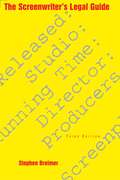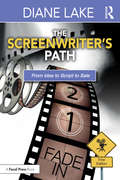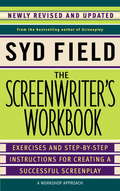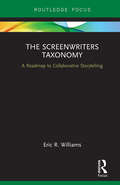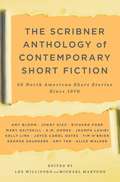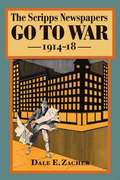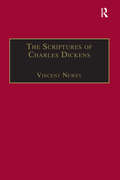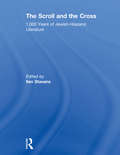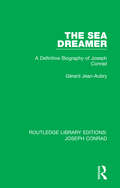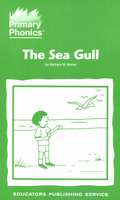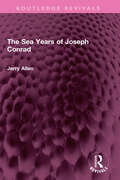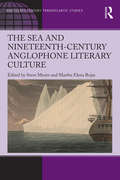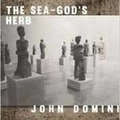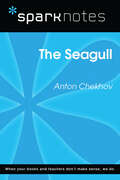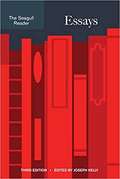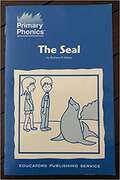- Table View
- List View
The Screenwriter's Guide to Agents and Managers
by John Scott LewinskiThe lessons to be learned from this helpful guide show aspiring screenwriters, television writers, and novelists how to catch an agent's eye and develop a successful scriptwriting career. Step-by-step instructions reveal how to get around the "Catch 22" of the trade-that you can't get an agent until you've sold a script. Interviews with prominent agents and managers disclose how the power brokers choose material, what kinds of writers command their attention, and what they expect from the writers they sign on. Tips on how to write a winning spec script, how to word an effective query letter, how to forge a sound relationship with reps, and other invaluable advice fill this insider's guide.
The Screenwriter's Legal Guide: Third Edition
by Stephen BreimerThis authoritative guide will help both fledgling and established writers to negotiate the best deal, protect their work, and get fair compensation for it. One of the most powerful entertainment lawyers in Hollywood provides easy-to-understand, expert advice on all the legal issues involved in the business of screenwriting. He gives an enlightening explanation of the screenwriter's position in the industry and then provides a thorough discussion of contracts, options, and working with agents and lawyers. This book shows screenwriters what to give up as a lost cause and what to hold out for.
The Screenwriter's Path: From Idea to Script to Sale
by Diane LakeThe Screenwriter’s Path takes a comprehensive approach to learning how to write a screenplay—allowing the writer to use it as both a reference and a guide in constructing a script. A tenured professor of screenwriting at Emerson College in Boston, author Diane Lake has 20 years' experience writing screenplays for major studios and was a co-writer of the Academy-award winning film Frida. The book sets out a unique approach to story structure and characterization that takes writers, step by step, to a completed screenplay, and it is full of practical advice on what to do with the finished script to get it seen by the right people. By demystifying the process of writing a screenplay, Lake empowers any writer to bring their vision to the screen.
The Screenwriter's Workbook (Revised Edition)
by Syd FieldAt last! The classic screenwriting workbook—now completely revised and updated—from the celebrated lecturer, teacher, and bestselling author, Syd Field: “the most sought-after screenwriting teacher in the world”* No one knows more about screenwriting than Syd Field—and now the ultimate Hollywood insider shares his secrets and expertise, completely updating his bestselling workbook for a new generation of screenwriters. Filled with new material—including fresh insights and anecdotes from the author and analyses of films from Pulp Fiction to Brokeback Mountain—The Screenwriter’s Workbook is your very own hands-on workshop, the book that allows you to participate in the processes that have made Syd Field’s workshops invaluable to beginners and working professionals alike. Follow this workbook through to the finish, and you’ll end up with a complete and salable script! Learn how to: • Define the idea on which your script will be built • Create the model—the paradigm—that professionals use • Bring your characters to life • Write dialogue like a pro • Structure your screenplay for success from the crucial first pages to the final act Here are systematic instructions, easy-to-follow exercises, a clear explanation of screenwriting basics, and expert advice at every turn—all the moment-to-moment, line-by-line help you need to transform your initial idea into a professional screenplay that’s earmarked for success. The Perfect Companion Volume to Syd Field’s Revised and Updated Edition of Screenplay: The Foundations of Screenwriting *Hollywood Reporter
The Screenwriters Taxonomy: A Collaborative Approach to Creative Storytelling
by Eric WilliamsIn The Screenwriters Taxonomy, award-winning screenwriter and educator Eric R. Williams offers a new collaborative approach for creative storytellers to recognize, discuss and reinvent storytelling paradigms. Williams presents seven different aspects of storytelling that can be applied to any fictional narrative film—from super genre, macrogenre and microgenre to voice and point of view—allowing writers to analyze existing films and innovate on these structures in their own stories. Moving beyond film theory, Williams describes how this roadmap for creative decision making can relate to classics like Sunset Boulevard, The Wizard of Oz and Butch Cassidy and the Sundance Kid as well as such diverse modern favorites like 12 Years a Slave, Anomalisa and Shrek.
The Screwtape Letters: Annotated Edition
by C. S. LewisA masterpiece of satire, this classic has entertained and enlightened readers the world over with its sly and ironic portrayal of human life from the vantage point of Screwtape, a senior tempter in the service of "Our Father Below." At once wildly comic, deadly serious, and strikingly original, C. S. Lewis gives us the correspondence of the worldly-wise old devil to his nephew Wormwood, a novice demon in charge of securing the damnation of an ordinary young man. The Screwtape Letters is the most engaging and humorous account of temptation--and triumph over it--ever written.Now, for the first time, The Screwtape Letters is presented with its full text alongside helpful annotations provided by Lewis enthusiast and dramatist Paul McCusker. The notes include literary, theological, and biographical information to enhance Lewis's core themes and demystify complex ideas. McCusker also guides readers to concepts and references from the beloved author's other treasured volumes to deepen and enrich this timeless classic. The annotated edition is the ultimate guide for understanding the heavenly truths buried in these epistles from below.
The Scribes For Women's Convents in Late Medieval Germany
by Cynthia J. CyrusWhile there has been a great tradition of scholarship in medieval manuscripts, most studies have focused on the details of manuscript production by male copyists. In this study, Cynthia J. Cyrus demonstrates the prevalence of manuscript production by women monastics and challenges current assumptions of how manuscripts circulated in the late medieval period. Drawing on extensive research into the surviving manuscripts of over 450 women's convents, the author assesses the genres common to women's convent libraries emphasizing a social rather than a codicological understanding of how manuscripts of women's libraries came to be copied. An engaging mix of biography, women's history, and book history, The Scribes for Women's Convents in Late Medieval Germany will change the way medieval manuscripts are understood and studied.
The Scribner Anthology of Contemporary Short Fiction: 50 North American Stories Since 1970
by Michael Martone Lex WillifordSelected from a survey of more than five hundred English professors, short story writers, and novelists, this revised and updated second edition features fifty remarkable stories written by a wide spectrum of stylistically and culturally diverse authors. Russell Banks - Donald Barthelme - Rick Bass - Richard Bausch - Charles Baxter - Amy Bloom - T. C. Boyle - Kevin Brockmeier - Robert Olen Butler - Sandra Cisneros - Peter Ho Davies - Janet Desaulniers - Junot Diaz - Anthony Doerr - Stuart Dybek - Deborah Eisenberg - Richard Ford - Mary Gaitskill - Dagoberto Gilb - Ron Hansen - A. M. Homes - Mary Hood - Denis Johnson - Edward P. Jones - Thom Jones - Jamaica Kincaid - Jhumpa Lahiri - David Leavitt - Kelly Link - Reginald McKnight - David Means - Susan Minot - Rick Moody - Bharati Mukherjee - Antonya Nelson - Joyce Carol Oates - Tim O'Brien - Daniel Orozco - Julie Orringer - ZZ Packer - E. Annie Proulx - Stacey Richter - George Saunders - Joan Silber - Leslie Marmon Silko - Susan Sontag - Amy Tan - Melanie Rae Thon - Alice Walker - Steve Yarbrough
The Scripps Newspapers Go to War, 1914-18
by Dale ZacherA telling look at the inner workings of one of the nation's most dominant news outlets during wartime In an age before radio and television, E. W. Scripps's ownership of twenty-one newspapers, a major news wire service, and a prominent news syndication service represented the first truly national media organization in the United States. In The Scripps Newspapers Go to War, 1914-18, Dale Zacher details the scope, organization, and character of the mighty Scripps empire during World War I to reveal how the pressures of the market, government censorship, propaganda, and progressivism transformed news coverage during wartime. This volume presents the first systematic look at the daily operations of any major newspaper operation during World War I and provides fascinating accounts of how the papers struggled with competition, their patriotic duties, and internal editorial dissent. The book also engages questions about American neutrality and the newspapers' relationship with President Woodrow Wilson, the move to join the war, and the fallout from the disillusionment of actually experiencing war. Ultimately, Zacher shows how the progressive spirit and political independence at the Scripps newspapers came under attack and was forever changed by this crucial period in American history. A volume in the series The History of Communication, edited by Robert W. McChesney and John C. Nerone
The Scriptures of Charles Dickens: Novels of Ideology, Novels of the Self (The Nineteenth Century Series)
by Vincent NeweyThis study focuses on Dickens's response to questions of identity, conduct, and social organization that emerged in an era of major cultural unsettlement and change, not least with the decline of religious certainty and the rise of materialism. An analysis of A Christmas Carol as a paradigm of his concerns and strategies in these fields is followed by close readings of novels from different stages of his career, Oliver Twist, David Copperfield, Great Expectations and Our Mutual Friend. These, and other works by Dickens, are seen to reflect ideologies currently at work in his society but also, more importantly, to participate in the construction of needful value systems and codes for regulating behaviour. Liberal humanism and middle-class hegemony feature largely in this process of culture formation, where Dickens played a crucial role in formulating and promulgating such salient guiding principles as those of sympathy, marriage and the family, economic responsibility, and hierarchy within and between groups. His treatment of the self is on one level driven by this project in shaping and stabilizing attitudes among a confederacy of readers, in that it offers positive models of development, of how to function and fit in; yet on another, especially in his sustained imaginative preoccupation with the figure of the outsider or misfit, this is one pre-eminent area where his writing transcends purposes of enculturation and paradoxically challenges its own ideological positions. His female characters in particular, as well as more obviously his anti-heroes, criminals, and other dissidents, are shown to question and subvert the moulds in which they are formally cast. The novels are confirmed not only as great creative achievements, an aspect this book consistently salutes, nor simply as a primary site of the evolving Victorian dispensation and revolution of ideas, but as a territory that predicts, engages, and illuminates our own complex modernity. Reference is made throughout the volume to other contemporary writings, including sociological, philosophic, and medical discourse, to recent cognate theory, and to traditions, like that of Puritan spiritual autobiography, which Dickens adapted to new ends.
The Scroll and the Cross: 1,000 Years of Jewish-Hispanic Literature
by Ilan StavansJews and Latinos have been unlikely partners through tumultuous times. This groundbreaking, eclectic book of readings, edited by Ilan Stavans, whom The Washington Post described as "one of our foremost cultural critics," offers a sideboard of the ups and downs of that partnership. It includes some seventy canonical authors, Jews and non-Jews alike, through whose diverse oeuvre-poetry, fiction, theater, personal and philosophical essays, correspondence, historical documents, and even kitchen recipes-the reader is able to navigate the shifting waters of history, from Spain in the tenth century to the Spanish-speaking Americas and the United States today. The Reader showcases the writings of such notable authors as Solomon ibn Gabirol, Maimonides, Miguel de Cervantes, Henry W. Longfellow, Miguel de Unamuno, Federico García Lorca, Jorge Luis Borges, Jacobo Timerman, Mario Vargas Llosa, Ruth Behar, and Ariel Dorfman to name only a few.
The Sea Dreamer: A Definitive Biography of Joseph Conrad (Routledge Library Editions: Joseph Conrad)
by Gérard Jean-AubryOf Joseph Conrad, H.L. Mencken has written: ‘There was something almost suggesting the vastness of a natural phenomenon. He transcended all the rules. There have been perhaps, greater novelists, but I believe that he was incomparably the greatest artist whoever wrote a novel.’ Originally published in 1957, the year of the centenary of Conrad’s birth, and although he was firmly established among the world’s great literary figures, little was known about him generally, beyond the fact that he was himself once a sailor, and that the language he handled with such mastery was not the one to which he was born. This was described as the definitive biography, written by one of Conrad’s closest friends, to whom the novelist willed his personal papers. It took many years to prepare and the author travelled extensively in the lands that Conrad knew and wrote about. He writes with clarity, compassion and understanding of Conrad’s childhood in Russia (where the father was exiled for Polish nationalist activities); of how the youth of fifteen, who had never seen the sea before, became a sailor; of how at twenty-nine he became a British subject and master of his own ship; of how in 1894 he became a novelist almost by accident, rose rapidly to literary fame, found new friends and established himself in literary history. This is a record of the strangest and most enigmatic of lives, fascinating and authoritative at the same time.
The Sea Mammal Alphabet Book
by Jerry PallottaWith his signature humor and amazing facts, best-selling author Jerry Pallotta offers a creature that lives in the ocean and needs air to breathe for every letter of the alphabet.Meet dozens of sea mammals--and a few bonus animals--in this beautifully and accurately illustrated alphabet book. In typical Jerry Pallotta style, the text is funny and engaging and often speaks directly to the reader to keep kids entertained and learning with every page turn. General facts about sea mammals are sprinkled throughout the text.
The Sea View Has Me Again: Uwe Johnson in Sheerness
by Patrick WrightThe story of Uwe Johnson, one of Germany's greatest and most-influential post-war writers, and how he came to live and work in Sheerness, Kent in the 1970s.Towards the end of 1974, a stranger arrived in the small town of Sheerness on the Isle of Sheppey in Kent. He could often be found sitting at the bar in the Napier Tavern, drinking lager and smoking Gauloises while flicking through the pages of the Kent Evening Post. "Charles" was the name he offered to his new acquaintances. But this unexpected immigrant was actually Uwe Johnson, originally from the Baltic province of Mecklenburg in the GDR, and already famous as the leading author of a divided Germany. What caused him to abandon West Berlin and spend the last nine years of his life in Sheerness, where he eventually completed his great New York novel Anniversaries in a house overlooking the outer reaches of the Thames Estuary? And what did he mean by detecting a "moral utopia" in a town that others, including his concerned friends, saw only as a busted slum on an island abandoned to "deindustrialisation" and a stranded Liberty ship full of unexploded bombs? Patrick Wright, who himself abandoned north Kent for Canada a few months before Johnson arrived, returns to the "island that is all the world" to uncover the story of the East German author's English decade, and to understand why his closely observed Kentish writings continue to speak with such clairvoyance in the age of Brexit. Guided in his encounters and researches by clues left by Johnson in his own "island stories", the book is set in the 1970s, when North Sea oil and joining the European Economic Community seemed the last hope for bankrupt Britain. It opens out to provide an alternative version of modern British history: a history for the present, told through the rich and haunted landscapes of an often spurned downriver mudbank, with a brilliant German answer to Robinson Crusoe as its primary witness.
The Sea Voyage Narrative (Genres in Context)
by Robert FoulkeFrom The Odyssey to Moby Dick to The Old Man and the Sea, the long tradition of sea voyage narratives is comprehensively explained here supported by discussions of key texts.
The Sea Years of Joseph Conrad (Routledge Revivals)
by Jerry AllenFirst Published in 1967 The Sea Years of Joseph Conrad is a major biography, a fruit of Jerry Allen’s ten years of extensive research making use of records located in fifteen countries, the majority never before published. The author has discovered and described in detail many of the real people and events developed by Conrad in his fiction. These includes his contact with the 1876 revolution in Columbia; the sensational Jeddah incident of 1880; the Congo episode behind Heart of Darkness; the American with whom Conrad fought a duel in Marseilles etc. Illustrated with many rare and previously unpublished photographs this book offers a fascinating narrative for the general reader and extensive material for the scholar.
The Sea and Nineteenth-Century Anglophone Literary Culture (Ashgate Series in Nineteenth-Century Transatlantic Studies)
by Steve Mentz Martha Elena RojasDuring the nineteenth century, British and American naval supremacy spanned the globe. The importance of transoceanic shipping and trade to the European-based empire and her rapidly expanding former colony ensured that the ocean became increasingly important to popular literary culture in both nations. This collection of ten essays by expert scholars in transatlantic British and American literatures interrogates the diverse meanings the ocean assumed for writers, readers, and thinkers on both sides of the Atlantic during this period of global exploration and colonial consolidation. The book’s introduction offers three critical lenses through which to read nineteenth-century Anglophone maritime literature: "wet globalization," which returns the ocean to our discourses of the global; "salt aesthetics," which considers how the sea influences artistic culture and aesthetic theory; and "blue ecocriticism," which poses an oceanic challenge to the narrowly terrestrial nature of "green" ecological criticism. The essays employ all three of these lenses to demonstrate the importance of the ocean for the changing shapes of nineteenth-century Anglophone culture and literature. Examining texts from Moby-Dick to the coral flower-books of Victorian Australia, and from Wordsworth’s sea-poetry to the Arctic journals of Charles Francis Hall, this book shows how important and how varied in meaning the ocean was to nineteenth-century Anglophone readers. Scholars of nineteenth-century globalization, the history of aesthetics, and the ecological importance of the ocean will find important scholarship in this volume.
The Sea in the Greek Imagination
by Marie-Claire BeaulieuThe sea is omnipresent in Greek life. Visible from nearly everywhere, the sea represents the life and livelihood of many who dwell on the islands and coastal areas of the Mediterranean, and it has been so since long ago—the sea loomed large in the Homeric epics and throughout Greek mythology. The Greeks of antiquity turned to the sea for food and for transport; for war, commerce, and scientific advancement; and for religious purification and other rites. Yet, the sea was simultaneously the center of Greek life and its limit. For, while the sea was a giver of much, it also embodied danger and uncertainty. It was in turns barren and fertile, and pictured as both a roadway and a terrifying void. The image of the sea in Greek myth is as conflicting as it is common, with sea crossings taking on seemingly incompatible meanings in different circumstances.In The Sea in the Greek Imagination, Marie-Claire Beaulieu unifies the multifarious representations of the sea and sea crossings in Greek myth and imagery by positing the sea as a cosmological boundary between the mortal world, the underworld, and the realms of the immortal. Through six in-depth case studies, she shows how, more than a simple physical boundary, the sea represented the buffer zone between the imaginary and the real, the transitional space between the worlds of the living, the dead, and the gods. From dolphin riders to Dionysus, maidens to mermen, Beaulieu investigates the role of the sea in Greek myth in a broad-ranging and innovative study.
The Sea-God's Herb
by John DominiA witty and sophisticated examination of nontraditional storytelling in contemporary art and literature, The Sea-God's Herb contains reviews and essays on some of the most interesting authors and artists of the last forty years. From William Gass and Thomas Pynchon to Brian Evenson and Steve Erickson, John Domini takes readers beyond that which is "impossible" to explain. John Domini, noted poet, essayist, and author, has had his work appear in the New York Times, GQ, Paris Review, and Ploughshares. A former National Endowment for the Arts and Ingram-Merrill Foundation fellow, he teaches at Iowa State University and lives in Des Moines, Iowa.
The Sea: Thalassography and Historiography
by Miller Peter N.The Sea brings together a group of noted contributors to evaluate the different ways in which seas have served as subjects in historiography and asks how this has changed---and will change---the way history is written. The essays in this volume provide exemplary demonstrations of how a sea-based history-writing that focuses on connectivity, networks, and individuals describes the horizons and the potential of thalassography---the study of the world made by individuals embedded in networks of motion. As Peter N. Miller contends in his introduction, writing about the sea, today, is a way of partaking in the wider historiographical shift toward microhistory; exchange relations; networks; and, above all, materiality, both literally and figuratively. The Sea focuses not on questions of discipline and professionalization as much as on the practice of scholarship: the writing, and therefore the planning and organizing, of histories of the sea.
The Seagull (SparkNotes Literature Guide Series)
by SparkNotesThe Seagull (SparkNotes Literature Guide) by Anton Chekhov Making the reading experience fun! Created by Harvard students for students everywhere, SparkNotes is a new breed of study guide: smarter, better, faster. Geared to what today's students need to know, SparkNotes provides: *Chapter-by-chapter analysis *Explanations of key themes, motifs, and symbols *A review quiz and essay topicsLively and accessible, these guides are perfect for late-night studying and writing papers
The Seagull Book Of Poems
by Joseph KellyAn inexpensive and portable alternative to bulky anthologies, The Seagull Reader: Plays offers eight classic (and contemporary classic) plays complemented by helpful editorial apparatus, including an introduction to the major concepts of the genre, brief headnotes, annotations where necessary, a glossary of terms, and biographical sketches of the authors.
The Seagull Reader: Essays
by Joseph KellyThe best-priced alternative to full-length readers, The Seagull Reader: Essays offers an attractive blend of classroom favorites and unique, compelling choices in a compact and portable format.
The Seal (Primary Phonics Storybook #Set 2 Book 8)
by Barbara W. MakarA systematic, phonics-based early reading program that includes: the most practice for every skill, decodable readers for every skill, and reinforcement materials--help struggling students succeed in the regular classroom

